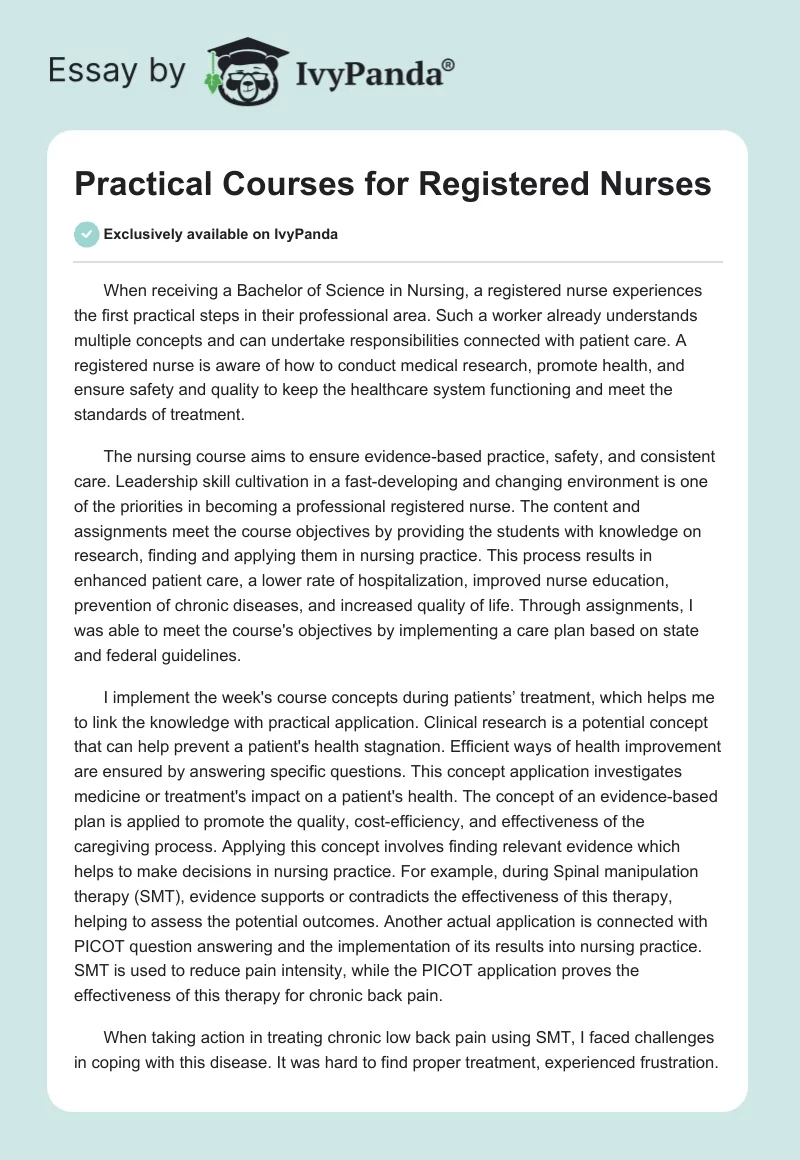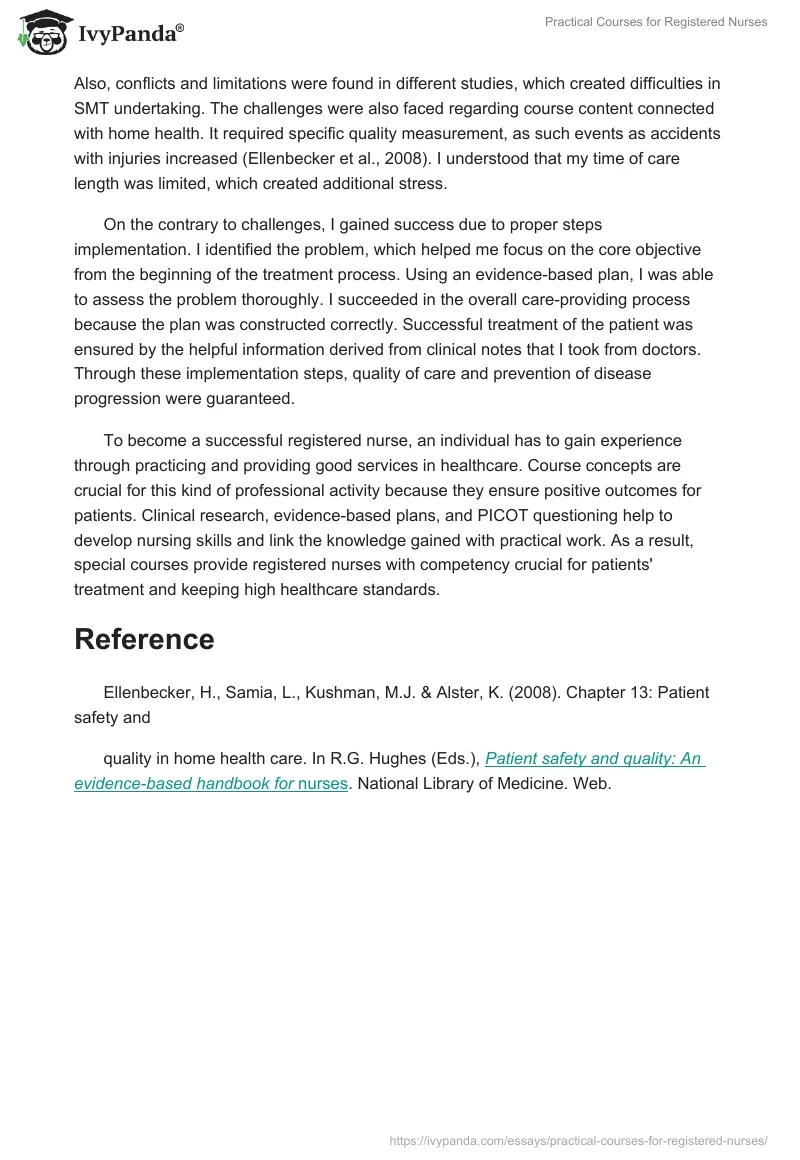When receiving a Bachelor of Science in Nursing, a registered nurse experiences the first practical steps in their professional area. Such a worker already understands multiple concepts and can undertake responsibilities connected with patient care. A registered nurse is aware of how to conduct medical research, promote health, and ensure safety and quality to keep the healthcare system functioning and meet the standards of treatment.
The nursing course aims to ensure evidence-based practice, safety, and consistent care. Leadership skill cultivation in a fast-developing and changing environment is one of the priorities in becoming a professional registered nurse. The content and assignments meet the course objectives by providing the students with knowledge on research, finding and applying them in nursing practice. This process results in enhanced patient care, a lower rate of hospitalization, improved nurse education, prevention of chronic diseases, and increased quality of life. Through assignments, I was able to meet the course’s objectives by implementing a care plan based on state and federal guidelines.
I implement the week’s course concepts during patients’ treatment, which helps me to link the knowledge with practical application. Clinical research is a potential concept that can help prevent a patient’s health stagnation. Efficient ways of health improvement are ensured by answering specific questions. This concept application investigates medicine or treatment’s impact on a patient’s health. The concept of an evidence-based plan is applied to promote the quality, cost-efficiency, and effectiveness of the caregiving process. Applying this concept involves finding relevant evidence which helps to make decisions in nursing practice. For example, during Spinal manipulation therapy (SMT), evidence supports or contradicts the effectiveness of this therapy, helping to assess the potential outcomes. Another actual application is connected with PICOT question answering and the implementation of its results into nursing practice. SMT is used to reduce pain intensity, while the PICOT application proves the effectiveness of this therapy for chronic back pain.
When taking action in treating chronic low back pain using SMT, I faced challenges in coping with this disease. It was hard to find proper treatment, experienced frustration. Also, conflicts and limitations were found in different studies, which created difficulties in SMT undertaking. The challenges were also faced regarding course content connected with home health. It required specific quality measurement, as such events as accidents with injuries increased (Ellenbecker et al., 2008). I understood that my time of care length was limited, which created additional stress.
On the contrary to challenges, I gained success due to proper steps implementation. I identified the problem, which helped me focus on the core objective from the beginning of the treatment process. Using an evidence-based plan, I was able to assess the problem thoroughly. I succeeded in the overall care-providing process because the plan was constructed correctly. Successful treatment of the patient was ensured by the helpful information derived from clinical notes that I took from doctors. Through these implementation steps, quality of care and prevention of disease progression were guaranteed.
To become a successful registered nurse, an individual has to gain experience through practicing and providing good services in healthcare. Course concepts are crucial for this kind of professional activity because they ensure positive outcomes for patients. Clinical research, evidence-based plans, and PICOT questioning help to develop nursing skills and link the knowledge gained with practical work. As a result, special courses provide registered nurses with competency crucial for patients’ treatment and keeping high healthcare standards.
Reference
Ellenbecker, H., Samia, L., Kushman, M.J. & Alster, K. (2008). Chapter 13: Patient safety and
quality in home health care. In R.G. Hughes (Eds.), Patient safety and quality: An evidence-based handbook for nurses. National Library of Medicine. Web.


